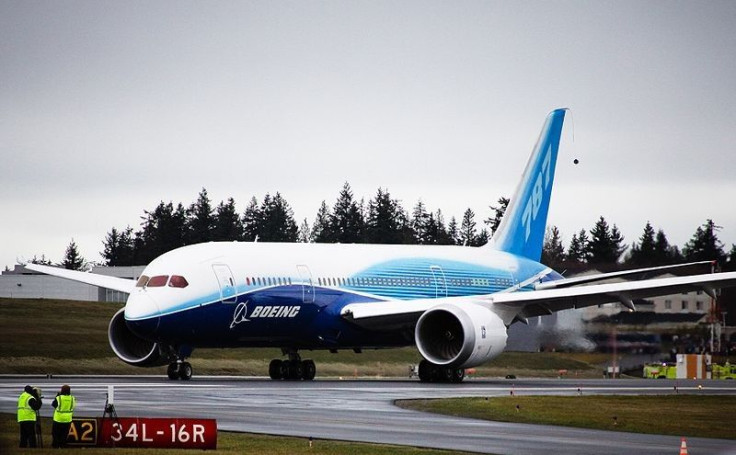Boeing 787 Dreamliner: The Era of Next-Generation Air Travel Begins Monday
ANALYSIS

True, at this stage, it's probably hard for investors, and others who fly commercially, to envision the following phrases in the same sentence: Boeing 787 and first delivery.
But the day has finally arrived for the next-generation Boeing 787 Dreamliner: on Monday, September 26, 2011, Boeing (BA) will deliver its first 787 Dreamliner to All Nippon Airways (ANA).
And that means it's time to dispense with all of the old and worn-out 787 jokes. As in:
7-late-7
'Next generation' means we won't fly on the plane until the next generation.
787 - The Next-Generation in Flight
On Monday at noon PDT/9 a.m. EDT, Boeing will fly the first 787 plane from Boeing's Paine Field in Washington state to Japan.
The 787 is the first commercial airplane made largely of composite materials, and that has substantially reduced its weight -- one factor in the plane's increased fuel efficiency.
As most investors know, the 787 saga has been a case study in project delay. Numerous production complications pushed the plane three years behind schedule; the project itself has been under development since 2003.
Even so, the delays have, by-and-large, not reduced enthusiasm for the 787, with its much-touted, next-generation, light-weight design, efficient engines, and state-of-the-art passenger areas.
Any airplane delivery delay is costly for a manufacturer. In this case, Boeing's 787 competes with Airbus' (EADS) A350.
Boeing's goal is to produce 10 787s per month by the end of 2013 to work through its order backlog of 821 planes.
Specifications
The 787 Dreamliner costs $185.2 million to $218.1 million each, depending on model configuration, and seats 210 to 290 people, depending on seat configuration. It's a mid-sized, wide-body plane with a lightweight carbon composite airframe. Flying range: 7,650-9,780 miles or 14,200-15,700 kilometers.
Analysts expect the plane to use roughly 20 percent less fuel than comparable planes and that will represent a substantial savings for airlines: jet fuel usually ranks second or first in flight expenses, just behind/ahead of employees salaries.
Further, as noted, one can't underscore the importance of the 787 for the United States. Commercial aviation represent one, critical, high-value-added export for the world's largest economy. Sales of commercial planes are vital to the United States' effort to end its trade deficit and start recording trade surpluses -- a key component of any nation's wealth. Commercial plane construction is also responsible for hundreds of thousands of domestic U.S. jobs.
Airline Sector/Economic Analysis: The 787 Dreamliner experienced seven costly production delays, and as a result of those setbacks, Boeing probably will not outsource as much work as it did with the 787 project.
Despite the delays, the aviation world -- from aviation writers to the typical traveler -- is eager to see how the plane flys and responds in real-world, in-service conditions.
The 787 Dreamliner, with its long range, reduces the need for airlines to fly passengers through hubs. In other words, Boeing has made a big calculation that airlines will want more point-to-point travel airplanes, and the view from here argues, travel trends will demonstrate that Boeing is correct.
Further, to say that the United States needs all of the domestic value-added jobs and exports sales it can get would be an understatement. Hence, know that policy makers in Washington, D.C. -- not just Boeing engineers in Everett, Wash., will be rooting for the 787 as it begins service Monday.
© Copyright IBTimes 2025. All rights reserved.





















